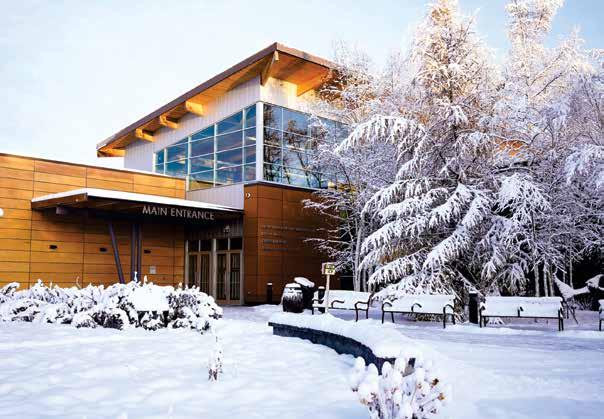
1 minute read
chase the AURORA
Aurora Season in Fairbanks spans nine months of the year and all four seasons—August 21 through April 21. The aurora borealis is active year-round but it is only during this time period that the midnight sun yields its heavenly canvas, allowing our northern nights to become dark enough to see this mesmerizing and aweinspiring phenomenon.
Why is aurora viewing so great here? There are multiple factors that make Fairbanks the ideal destination for spotting the northern lights, luring visitors from all over the world.
• Located directly under the Auroral Oval. This is a ring-shaped band that hovers in the atmosphere above the Arctic Circle where aurora activity is concentrated.
• Distance from coastal areas and low precipitation means less cloud cover and an increased number of clear night skies.
• Low light pollution thanks to a small population and longer nights for nine months of the year both contribute to darker skies, which make the aurora easier to see.
• Multiple diverse and accessible vantage points to look for or wait for the northern lights to appear in Fairbanks and the surrounding area.
• The 11-year solar cycle that loosely correlates to more solar activity and therefore more auroras does not significantly impact aurora viewing in the Fairbanks area due to our far-north position under the Auroral Oval.
All combined, your likelihood of seeing the aurora borealis in the Fairbanks area is pretty high. Stay for at least three nights and be out actively looking during the late-night hours and your chances of seeing the aurora are more than 90%.
For more information about the northern lights in Fairbanks, including a map to popular aurora viewing locations, stop by the Morris Thompson Cultural and Visitors Center and pick up the Aurora Viewing Map & Guide. Once you’ve seen the aurora, return to the center for your personalized Aurora Certificate to take home.











